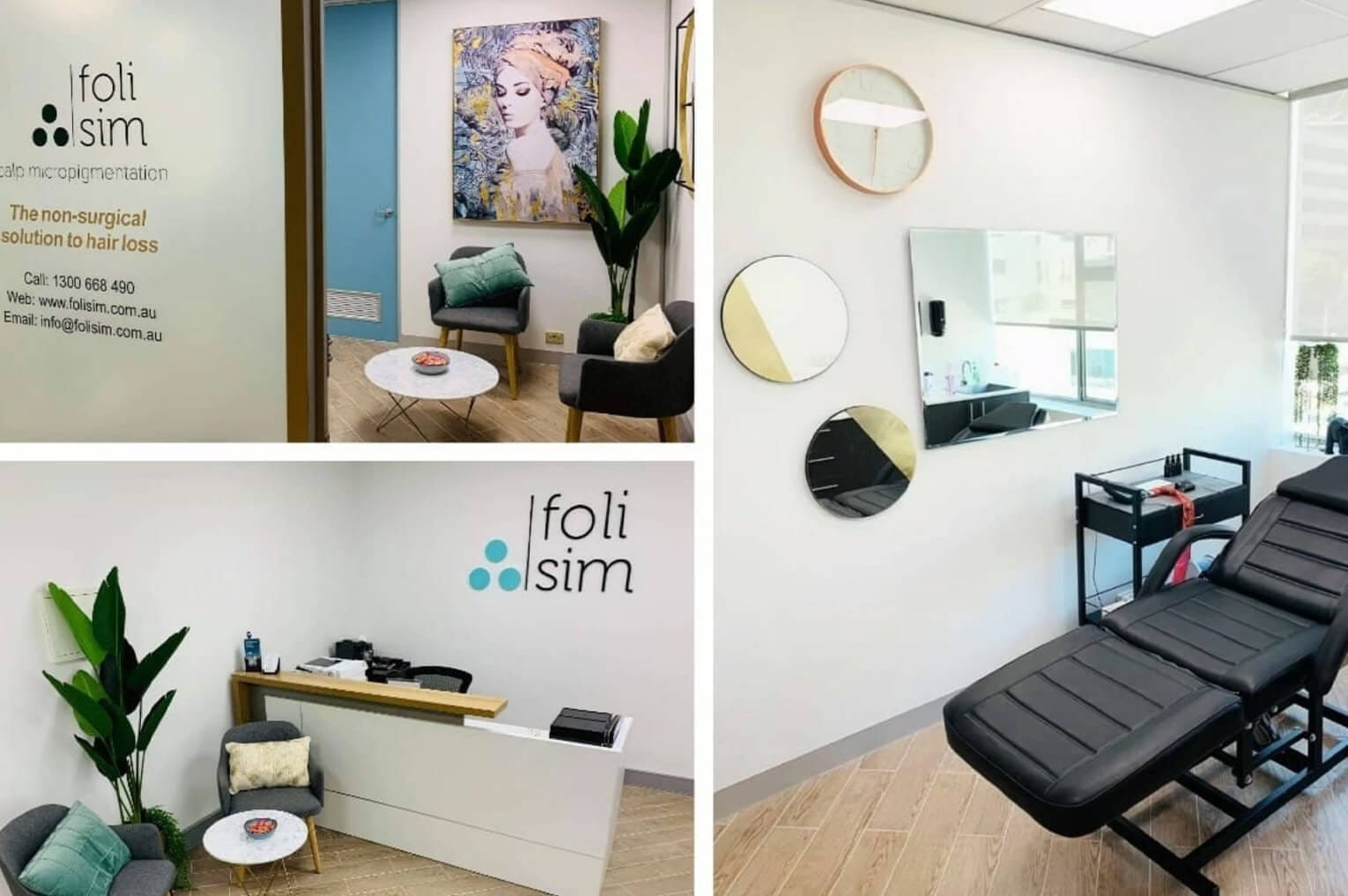The Hidden Costs of Discount Practitioners
When it comes to Scalp Micropigmentation (SMP) and other cosmetic procedures, many people are tempted to go for the cheapest option, which often means dealing with unlicensed or underqualified practitioners to save a few bucks. However, an upfront decision to save a couple hundred can cost thousands of dollars down the line when your result is less than desirable. It’s difficult to put a price on the time and energy spent dealing with a procedure that has gone wrong, as well as the emotional cost of having to live with it.
Research is important when considering any type of cosmetic procedure and Scalp Micropigmentation is no different. It is very technical and requires a great deal of training to perform with excellence. Cutting costs could result in a botched job that you will have to fix by hiring someone else later down the track. Depending on the severity of what went wrong, this could mean paying out of pocket for correctional work due to:
- Inconsistent pigments and colours
- Pigment saturation or migration, leading to a blotchiness effect on the scalp
- Poorly mapped out hairline
- Excessive fading
- Loss of individual dot definition due to poor deposit spacing
- Missed spots resulting in patchy areas on the head
It’s important to note that not only is it very difficult to correct poor pigmentation work, but sometimes it’s near impossible. In such cases, removing the defective treatment altogether with a laser is the only option. Unfortunately, SMP removal is a delicate process that may require several costly and potentially painful sessions; a single laser session can cost up to $400 per session, on top of the time and money already spent on the bad SMP.
If a price sounds too good to be true, it probably is. Aside from the unnatural and unappealing results you could get from an unqualified ‘artist’, you also run the risk of health complications.
Botched Jobs Can Also Cost You Your Health
Due to its non-invasive nature, SMP is an extremely safe procedure with no downtime. Often compared to the process of getting a traditional tattoo, the pain from Scalp Micropigmentation is less intense and shallower using a pointillism technique instead of scraping. When done correctly, it can be mildly painful for some, irritating to others, and virtually painless for the vast majority depending on your tolerance. Poorly administered SMP, on the other hand, can lead to painful complications.
Though the treatment itself is not a cause for concern, the greatest danger of SMP is the factors involved during treatment, including:
- An inexperienced practitioner
- Unsanitary tools
- Allergies
- Unhygienic maintenance
- Poor quality inks with heavy metals present
Side effects from these factors can range from inflammation, infections, and rashes to scarring and allergic reaction to pigments. Depending on the type of pigment used, these side effects can include a burning sensation on the affected areas and could limit your access to magnetic-based imaging equipment like an MRI, due to the iron oxide present in these pigments.
Even rarer but scarier is the potential for skin infections, which can lead to fever and disease. If the equipment used to create your SMP is contaminated with bacteria or infected blood, you can contract various bloodborne diseases, including methicillin-resistant Staphylococcus aureus (MRSA), hepatitis B and hepatitis C.
It is important to note that while these side effects are rare, they are very real. The good news is that these dangers can easily be avoided by doing your research. Improper body substance isolation and sterilisation protocols are scary, but with an inexperienced practitioner, you’re at an increased risk of both. Ensuring the professional you choose is qualified and has the right credentials to carry out the procedure beforehand will be the difference in saving a potential visit to the doctors.
So How Do I Avoid These Risks?
Now that you’re aware of the risks, it will be much easier to know what to look out for when choosing a practitioner. What separates a qualified practitioner from an underqualified one is simple: knowledge. Finding the right practitioner for your cosmetic procedure does not have to be daunting, it just takes a little research.
When considering cosmetic procedures, many of us are guilty of hurrying ahead to ‘get on with’ the process of receiving the actual treatment without doing our due diligence and completing our homework. Maybe it’s because labouring over the details of your practitioner’s training and experience doesn’t particularly interest you or maybe you don’t think it matters all that much. You may think, “It’s their profession, so they must be a professional.” Unfortunately, as we have learned, that is not always the case.
With a growing demand for SMP in recent years, many ‘artists’ claim to be qualified, so it is crucial to ensure that your sense of urgency does not override your need to research your SMP professional. That way, you are making an informed decision about who you are trusting with your scalp.
Qualifications
While they are often compared, cosmetic tattoo artists and tattoo artists are not qualified to be SMP artists and they should not be confused with one another. SMP practitioners are registered to perform it, hold certificates from well-known SMP treatment facilities, and have completed the relevant Safety, Hazard and Infection Control courses for their area.
Experience
Practice does in fact make perfect and that is especially true when it comes to performing cosmetic procedures. SMP is not one-size-fits-all and therefore needs to be tailored to the individual. The best artists do not just hold the necessary credentials; they have trained with the best, have several years of practice on heads of all shapes, sizes and ethnicities, and have a reputable standing in the industry.
Testimonials
The best kind of reassurance you can have is from other people who have been there and done that. Hearing from other people’s experiences is a powerful tool when shopping for your practitioner and provides insight into the finer details of their personality, behaviour and creative flair. Read their reviews and find those with similar situations as yours who have had successful results. Similarly, learn from others’ mistakes and steer clear of those with too many negative ones.
Portfolio
The proof is in the picture. Before and after photos are a great indicator of quality. Make sure you look through your practitioner’s portfolio to ensure they are a good fit for you. Instagram is often a helpful tool for this, as more and more artists are showcasing their work through social media. If a company has no website or social media presence, or if they are hesitant to show you their work, consider it a red flag.
Some things to ask yourself when looking at before and after pictures:
- Are the transformations too good to be true?
- Does the after picture look unnatural?
- Is there a wide variety of looks in their portfolio? Be cautious if you’re seeing the same look over again, as it can mean they don’t have experience with different hair types and skin tones.
- Do the photos include a variety of angles and lighting?
Find Someone Who Makes You Feel Comfortable
So you’ve read up on the side effects, done a thorough background check on your practitioner, asked around for people’s experiences, and reviewed pictures of their work. You feel confident with your decision. Your research is done, right? Hmm… Not quite yet.
While doing your research beforehand is crucial to finding a qualified practitioner you feel safe with, it doesn’t stop there. A consultation should play a major role in your decision, as nothing beats meeting in person. This is why consultations are so important and a pivotal process of your research. During this time, you’ll have the opportunity to ‘screen’ your practitioner. Take special notice of their bedside manner. Do they take the time to understand your situation, concerns and goals? Are they confident in their capabilities? Do they provide clear answers?
Full transparency is key. A good practitioner is honest about the risks and benefits of a procedure and will not push you into doing something you don’t want or is not likely to produce the results you’re looking for. If you feel any hesitation towards them, this is a sign that they are not the best fit for you. Simply put, trust your gut.
Is the Clinic as Clean as the Practitioner’s Record?
Going for a consultation provides the perfect opportunity to not only meet your potential practitioner, but it also allows you to assess the cleanliness of the working space. As the last crucial step in your research when booking a cosmetic procedure, it is imperative to investigate the clinic itself.
Ask for a tour of the practice and while doing so, make sure you do a bit of detective work to get more information. Look around for their Health Department licence on display, which shows they are legally able to carry out the procedure. Take note of how clean and sterile the practice is and whether there is a sink available in the treatment rooms. If anything looks or smells slightly off, question it.
Are all SMP artists wearing proper PPE including gloves, face masks and barrier film on the SMP device? Are they using new, single-use needles and opening the package in front of their clients? This is crucial when considering safety and minimising health risks associated with unsanitary protocols.
Similarly to screening your practitioner, if anything feels off in regards to the atmosphere, don’t be afraid to vocalise this. At this point, it’s not too late to change your mind and saying something could mean the difference between a successful procedure and an infection nightmare.
Curiosity Will Save the Cat This Time Around
There are no stupid questions when it comes to cosmetic procedures. This is your head we’re talking about, and the right practitioner will want you to be well prepared and confident in your choice. There should be no surprises when the big day approaches, which is why it’s so important to be an informed consumer and do all your research. Remember, you’re doing this to positively impact your life and when done right, it will.
Having a clear understanding of the costs, payment plans available, and if insurance benefits apply is important. So is speaking to both your general practitioner and SMP artist to see if you are a good candidate for this procedure. While most people are, some individuals with certain skin conditions like psoriasis and alopecia areata have to be assessed on a case-by-case basis. The same goes for pregnant women. Having open and candid conversations with your practitioner about your concerns and medical history is important so you both understand the risks associated and are happy with the results you can achieve. Are you using other treatments like Rogaine to help with hair growth? Do you have questions about aftercare and sun exposure? Let them know! A good practitioner will address all your concerns and be able to provide you with helpful instructions and tips.
Doing the research to find the perfect practitioner is your duty when undergoing any cosmetic procedure. While the task may seem daunting, it can mean a world of a difference to your mental, physical and financial health. And if you don’t like what they have to offer? Contact another, and another, and one more until you find a more qualified professional. Trust us, your future self will thank you.
Foli Sim
The friendly and qualified clinicians at Foli Sim Scalp Micropigmentation have a wealth of knowledge about SMP. So get in touch with us for a free, no-obligation consultation today. With three studios located in Perth, Sydney and Melbourne, we offer consultations in-person or via Zoom and WhatsApp.








